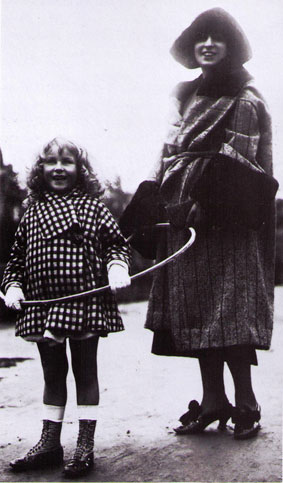
Not only the most fashionable portrait painter of her generation among the haute bourgeoisie and aristocracy, Lempicka was a glamour icon in her own right. Friends with Picasso, Jean Cocteau and Greta Garbo, Lempicka became known for her distinctive painting style, which emulated the sensual side of the French Art Deco movement.
- Movements and Styles: Art Deco, Proto-Feminist Artists
- Born: May 16, 1898 - Warsaw, Poland (then Russia)
- Died: March 18, 1980 - Cuernavaca, Mexico
Kizette with her mother, Tamara de Lempicka (Bois de Boulogne, Paris 1925)
Kizette de Lempicka was born Marie-Christine de Lempicka on September 16, 1916. Tamara often had her daughter model though did not always admit to others she had a child. Many of her friends were unaware of Kizette's existence. Tamara titled paintings of Kizette with anonymous titles such as Girl on a Balcony or First Communion.
Baroness Kizette de Lempicka-Foxhall wrote Passion by Design: The Art and Times of Tamara de Lempicka, her memoirs of her mother in 1986.


Left: Girl on a Balcony was important in Tamara de Lempicka's artistic career as it won her first major award, First Prize at the Exposition Internationale in 1927.
Right: Kizette in Pink (c.1926) Oil on canvas - Musée des Beaux-Arts de Nantes - France
Dr. Boucard was tangentially involved in cloak-and-dagger activities during the Second World War - his racing yacht was used by the French Resistance to transport munitions and was found by the Nazis and scuttled (then later purchased by Greek tycoon, Aristotle Onassis), Boucard's claim to fame as a famous French bacteriologist - hence the test tube and the microscope - was his 1907 isolation of Lactobacillus acidophilus, which he developed into an antidiarrheal drug called Lacetol. The discovery and subsequent development of the drug made Bourcard quite wealthy; thus, he had the finances to commission multiple portraits from Lempicka.
****




No comments:
Post a Comment